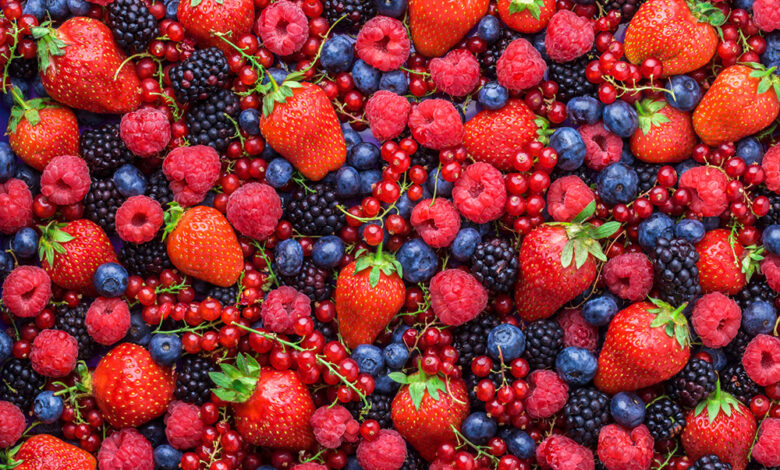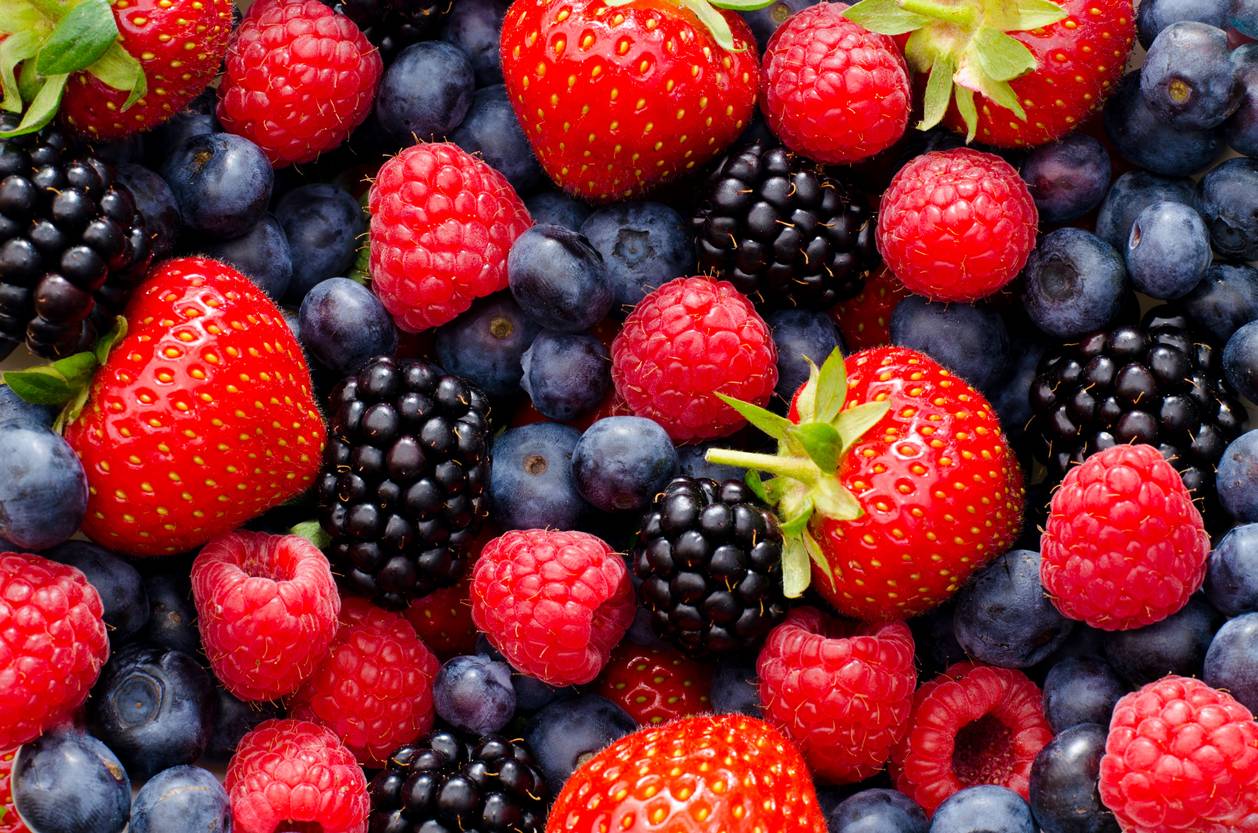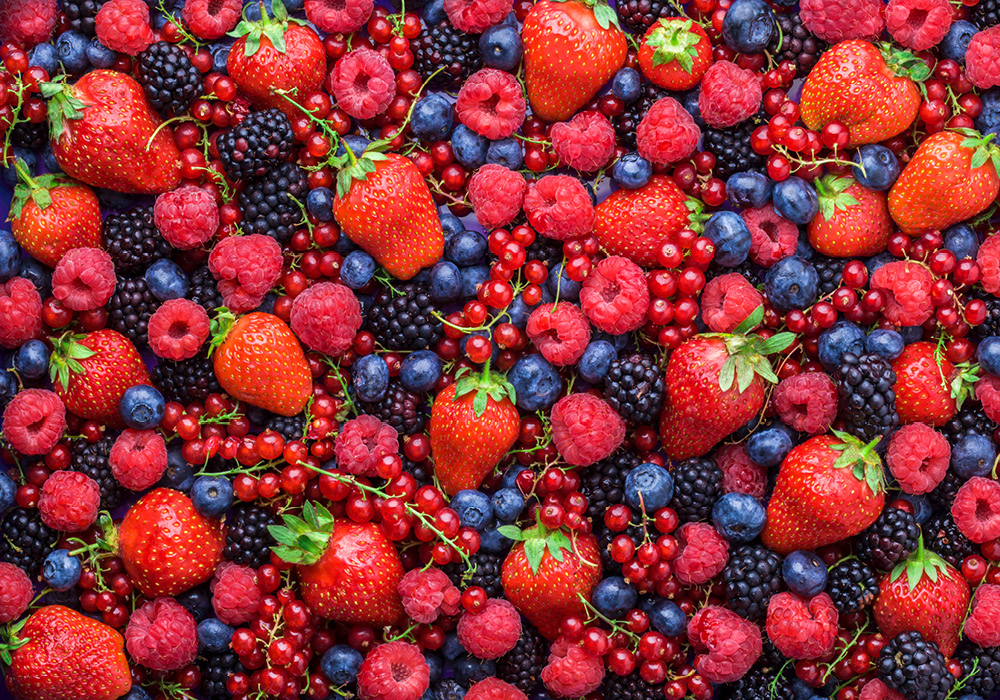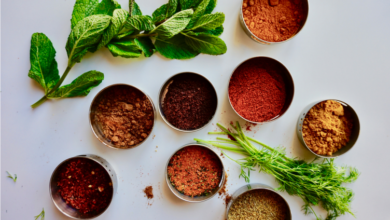
Everything You Need to Know About Berries
From the humble strawberry to the exotic acai berry, these tiny fruits have captured our taste buds and imaginations for centuries. Everything you need to know about berries is right here, from their fascinating botanical origins to their diverse culinary applications.
Join me as we explore the vibrant world of berries, uncovering their nutritional benefits, growing techniques, and cultural significance.
Whether you’re a seasoned gardener or a curious foodie, this comprehensive guide will equip you with the knowledge to appreciate and enjoy these delightful gems of nature.
Introduction to Berries
Berries are a diverse and delicious group of fruits that have captivated human taste buds for centuries. They are a staple in many cultures worldwide, enjoyed fresh, processed, or incorporated into culinary creations. But what exactly defines a berry? Let’s delve into the botanical definition and explore the fascinating world of these small but mighty fruits.
Berries are packed with antioxidants and vitamins, making them a delicious and healthy addition to any diet. But sometimes, life gets busy and we let our healthy habits slip. If you’re looking to rediscover those lost healthy habits, check out this great article on ways to rediscover lost healthy habits.
Once you’ve got your healthy routine back on track, don’t forget to include those tasty berries in your meals! They’re a simple way to boost your health and enjoy a sweet treat.
Botanical Definition of a Berry
A berry, in the strict botanical sense, is a fleshy fruit that develops from a single ovary and contains multiple seeds. The ovary wall, known as the pericarp, becomes the fleshy part of the berry. This definition distinguishes berries from other fruits like drupes (e.g., peaches, cherries), pomes (e.g., apples, pears), and legumes (e.g., beans, peas).
Types of Berries
The world of berries is vast and encompasses a wide range of flavors, colors, and textures. Here are some common and less-known types of berries:
Common Berries
- Strawberries:These iconic red berries are technically “false berries” as they develop from a fleshy receptacle that surrounds the tiny, true fruits. They are rich in vitamin C and antioxidants.
- Blueberries:These small, blue-hued berries are packed with antioxidants and are known for their tart, slightly sweet flavor.
- Raspberries:These delicate berries, with their characteristic red color and soft texture, are rich in fiber and vitamin C.
- Blackberries:Similar to raspberries, blackberries have a sweet, slightly tart flavor and are packed with antioxidants.
Less-Known Berries
- Goji Berries:These small, red berries are native to China and are known for their high concentration of antioxidants.
- Acai Berries:These dark purple berries are native to the Amazon rainforest and are a rich source of antioxidants and healthy fats.
- Elderberries:These small, dark berries have a unique flavor and are often used in jams, jellies, and syrups.
- Mulberries:These elongated, dark berries have a sweet, slightly tart flavor and are a good source of vitamin C and antioxidants.
History and Cultural Significance of Berries
Berries have played a significant role in human history and culture. Their abundance in nature and their nutritional value have made them a valuable food source for centuries.
Berries are a delicious and nutritious addition to any diet, packed with vitamins, antioxidants, and fiber. But with so many different types of berries available, it can be overwhelming to know which ones to choose. And then there’s the question of whether you should supplement with berry extracts or powders, which is a topic that experts debate should you supplement on regularly.
Ultimately, the best way to enjoy the benefits of berries is to eat them whole, in their natural form.
Ancient Civilizations
- Ancient Egyptians:Berries were depicted in ancient Egyptian art and were likely consumed as part of their diet.
- Ancient Greeks:Berries were mentioned in Greek mythology and were believed to have medicinal properties.
- Ancient Romans:Berries were cultivated and enjoyed by the Romans, and some species were even introduced to other parts of Europe.
Modern Society
- Culinary Delights:Berries are a versatile ingredient used in a wide range of culinary applications, from jams and jellies to pies and cakes.
- Health Benefits:Berries are rich in antioxidants, vitamins, and minerals, making them a popular choice for health-conscious individuals.
- Symbolism:Berries are often associated with abundance, fertility, and the cycle of life.
Nutritional Value of Berries: Everything You Need To Know About Berries
Berries are nutritional powerhouses, packed with vitamins, minerals, and antioxidants that offer a wide range of health benefits. Their vibrant colors are a testament to their rich phytochemical content, which plays a vital role in protecting against chronic diseases.
Berries are a nutritional powerhouse, packed with antioxidants and vitamins. They’re delicious on their own, but also perfect for adding a burst of flavor to smoothies, yogurt, and baked goods. And the best part? You can easily incorporate berries into your daily routine by taking a stroll through a local berry patch or picking some up at your local farmer’s market.
To make your berry-picking adventures even more enjoyable, check out this article on 25 reasons to love walking for exercise. After all, a little exercise can make those berries taste even sweeter! So, get out there and enjoy the fresh air, the sunshine, and the delightful taste of nature’s tiny treasures.
Key Nutrients in Berries
Berries are a treasure trove of essential nutrients. They are particularly rich in vitamins C and K, as well as dietary fiber and antioxidants. Here’s a closer look at the key nutrients found in different berry varieties:
- Vitamin C:Strawberries, raspberries, and blueberries are excellent sources of vitamin C, an antioxidant that supports immune function and collagen production.
- Vitamin K:Blackberries and raspberries are rich in vitamin K, which is crucial for blood clotting and bone health.
- Dietary Fiber:Berries are high in fiber, which promotes digestive health, helps regulate blood sugar levels, and contributes to feelings of fullness.
- Antioxidants:Berries are brimming with antioxidants, such as anthocyanins, flavonoids, and vitamin E, which protect cells from damage caused by free radicals.
Health Benefits of Berries, Everything you need to know about berries
The abundance of nutrients in berries translates into a multitude of health benefits. Research suggests that regular consumption of berries can:
- Improve Heart Health:Berries’ antioxidants may help lower blood pressure, improve cholesterol levels, and reduce inflammation, all of which contribute to cardiovascular health. Studies have shown that individuals who consume berries regularly have a lower risk of heart disease.
- Enhance Brain Function:Berries are rich in antioxidants that protect brain cells from damage and may improve cognitive function. Some studies suggest that berries may play a role in preventing age-related cognitive decline and Alzheimer’s disease.
- Boost Immunity:The vitamin C and antioxidants in berries support immune function, helping the body fight off infections and illnesses.
- Reduce Inflammation:Berries contain anti-inflammatory compounds that may help reduce chronic inflammation throughout the body, which is linked to a variety of diseases.
Nutritional Profiles of Different Berry Varieties
While all berries share a common nutritional foundation, their specific nutrient profiles can vary. Here’s a comparison of some popular berry varieties:
| Berry | Vitamin C (mg/100g) | Vitamin K (mcg/100g) | Dietary Fiber (g/100g) | Antioxidants (ORAC Units/100g) |
|---|---|---|---|---|
| Strawberries | 59 | 24 | 2.0 | 2,000 |
| Raspberries | 26 | 28 | 6.5 | 3,000 |
| Blueberries | 9 | 10 | 2.4 | 2,400 |
| Blackberries | 20 | 30 | 5.3 | 4,000 |
“Berries are a versatile and delicious way to boost your health and well-being. Enjoy them fresh, frozen, or incorporated into your favorite recipes.”
Types of Berries

Berries are a diverse group of fruits, and they come in many shapes, sizes, and colors. The term “berry” is often used loosely, but botanically, a berry is a fleshy fruit that develops from a single ovary and contains seeds.
This guide explores the many different types of berries, highlighting their characteristics, culinary uses, and nutritional benefits.
Berry Types: A Comprehensive Overview
A table showcasing the different types of berries, their descriptions, common varieties, and growing regions.
| Berry Type | Description | Common Varieties | Growing Regions |
|---|---|---|---|
| Strawberries | Small, red, heart-shaped fruits with a sweet and slightly tart flavor. They are aggregate fruits, meaning they are composed of numerous tiny drupelets clustered together. | Everbearing, June-bearing, and day-neutral strawberries. | Temperate climates worldwide. |
| Raspberries | Small, red, purple, or black fruits with a delicate flavor and a slightly tart finish. They are aggregate fruits, consisting of numerous drupelets that easily detach from the central core. | Red raspberries, black raspberries, and purple raspberries. | Temperate climates worldwide. |
| Blueberries | Small, round, blue fruits with a sweet and slightly tart flavor. They are true berries, meaning they develop from a single ovary. | Highbush blueberries, lowbush blueberries, and rabbiteye blueberries. | Cool, humid climates, primarily in North America. |
| Blackberries | Large, black, or dark purple fruits with a sweet and slightly tart flavor. They are aggregate fruits, similar to raspberries but with a more elongated shape. | Thornless blackberries, trailing blackberries, and erect blackberries. | Temperate climates worldwide. |
| Cranberries | Small, round, red fruits with a tart and tangy flavor. They are true berries, and they grow on low-lying vines. | Early Black, Howes, and Stevens varieties. | Cool, acidic bogs and marshes, primarily in North America. |
| Goji Berries | Small, red, oval fruits with a sweet and slightly tart flavor. They are not true berries but are classified as drupes, containing a single seed. | Lycium barbarum and Lycium chinense. | Warm, dry climates, primarily in China and the Himalayas. |
| Elderberries | Small, dark purple or black fruits with a tart and slightly bitter flavor. They are true berries, and they grow in clusters on elderberry bushes. | Sambucus nigra and Sambucus canadensis. | Temperate climates worldwide. |
| Mulberries | Small, dark purple or black fruits with a sweet and slightly tart flavor. They are aggregate fruits, consisting of numerous drupelets that are fused together. | White mulberries, red mulberries, and black mulberries. | Warm, temperate climates worldwide. |
| Acai Berries | Small, dark purple fruits with a sweet and slightly tart flavor. They are true berries, and they grow on acai palm trees. | Euterpe oleracea. | Tropical regions of South America, particularly the Amazon rainforest. |
| Lingonberries | Small, round, red fruits with a tart and slightly bitter flavor. They are true berries, and they grow on low-lying evergreen shrubs. | Vaccinium vitis-idaea. | Cold, northern climates, primarily in Europe, Asia, and North America. |
| Sea Buckthorn Berries | Small, orange or yellow fruits with a tart and slightly bitter flavor. They are not true berries but are classified as drupes. | Hippophae rhamnoides. | Coastal regions of Europe, Asia, and North America. |
| Huckleberries | Small, dark blue or black fruits with a sweet and slightly tart flavor. They are true berries, and they grow on huckleberry bushes. | Vaccinium species. | Cool, mountainous regions of North America. |
| Cloudberries | Small, yellow or orange fruits with a sweet and slightly tart flavor. They are aggregate fruits, similar to raspberries but with a more rounded shape. | Rubus chamaemorus. | Cold, northern climates, primarily in Europe, Asia, and North America. |
Berry Taste Profiles, Textures, and Culinary Uses
A detailed table showcasing the taste profiles, textures, and culinary uses of different types of berries.
| Berry Type | Taste Profile | Texture | Culinary Uses |
|---|---|---|---|
| Strawberries | Sweet and slightly tart, with a delicate, floral aroma. | Soft and juicy, with a slightly grainy texture. | Eaten fresh, used in jams, jellies, pies, cakes, and ice cream. |
| Raspberries | Sweet and slightly tart, with a delicate, floral aroma. | Soft and juicy, with a slightly seedy texture. | Eaten fresh, used in jams, jellies, pies, cakes, and ice cream. |
| Blueberries | Sweet and slightly tart, with a distinct, earthy flavor. | Firm and juicy, with a slightly crunchy texture. | Eaten fresh, used in muffins, pancakes, smoothies, and yogurt. |
| Blackberries | Sweet and slightly tart, with a rich, complex flavor. | Firm and juicy, with a slightly seedy texture. | Eaten fresh, used in pies, cobblers, jams, and sauces. |
| Cranberries | Tart and tangy, with a slightly bitter aftertaste. | Firm and slightly chewy, with a slightly crunchy texture. | Used in sauces, relishes, juices, and baked goods. |
| Goji Berries | Sweet and slightly tart, with a slightly earthy flavor. | Soft and chewy, with a slightly crunchy texture. | Eaten fresh, dried, or used in teas, smoothies, and snacks. |
| Elderberries | Tart and slightly bitter, with a floral aroma. | Soft and juicy, with a slightly seedy texture. | Used in jams, jellies, syrups, and wines. |
| Mulberries | Sweet and slightly tart, with a rich, complex flavor. | Soft and juicy, with a slightly seedy texture. | Eaten fresh, dried, or used in jams, pies, and cakes. |
| Acai Berries | Sweet and slightly tart, with a slightly earthy flavor. | Soft and creamy, with a slightly grainy texture. | Used in smoothies, juices, and supplements. |
| Lingonberries | Tart and slightly bitter, with a slightly sweet aftertaste. | Firm and slightly chewy, with a slightly crunchy texture. | Used in jams, sauces, and baked goods. |
| Sea Buckthorn Berries | Tart and slightly bitter, with a slightly citrusy flavor. | Soft and juicy, with a slightly seedy texture. | Used in juices, jams, and supplements. |
| Huckleberries | Sweet and slightly tart, with a rich, complex flavor. | Firm and juicy, with a slightly seedy texture. | Eaten fresh, used in pies, jams, and sauces. |
| Cloudberries | Sweet and slightly tart, with a delicate, floral aroma. | Soft and juicy, with a slightly seedy texture. | Eaten fresh, used in jams, jellies, and desserts. |
Growing Berries

Growing berries can be a rewarding experience, allowing you to enjoy fresh, flavorful fruit straight from your garden. From the simple satisfaction of nurturing a plant to the joy of harvesting your own berries, the process offers numerous benefits.
With a little planning and effort, you can successfully cultivate a berry patch that thrives in your specific climate and soil conditions.
Growing Berries in Containers
Container gardening offers a versatile option for growing berries, especially in areas with limited space or challenging soil conditions. This method allows you to control the growing environment, ensuring optimal conditions for your plants. When growing berries in containers, it’s crucial to choose the right container size and type.
The container should be large enough to accommodate the plant’s root system and provide adequate drainage. For example, dwarf varieties of blueberries and strawberries are well-suited for container growing, as their root systems are relatively compact. Additionally, selecting a container made from a material that doesn’t leach harmful chemicals into the soil is important.
For optimal growth, it’s essential to use a high-quality potting mix designed specifically for berries. This mix should be well-draining to prevent root rot. Regular fertilization is also necessary to provide the plants with the essential nutrients they need.
Tip: Regularly check the moisture level of the potting mix and water as needed, ensuring the soil is consistently moist but not waterlogged.
Growing Berries in Gardens
Growing berries in gardens offers a more traditional approach to berry cultivation, allowing plants to spread and establish themselves in the soil. This method requires careful planning and site preparation to ensure the plants thrive.The first step is to choose a location that receives adequate sunlight, as most berry plants require at least 6 hours of direct sunlight per day.
The soil should be well-drained and fertile, with a pH level that is suitable for the specific berry variety. For example, blueberries require acidic soil with a pH range of 4.5 to 5.5, while strawberries prefer slightly acidic soil with a pH of 6.0 to 6.5.
Tip: Before planting, amend the soil with organic matter, such as compost or aged manure, to improve drainage and fertility.
Growing Berries in Greenhouses
Greenhouses provide a controlled environment that allows you to extend the growing season and cultivate berries even in regions with harsh climates. This method offers greater control over temperature, humidity, and light levels, ensuring optimal conditions for your plants.When growing berries in greenhouses, it’s essential to select varieties that are suitable for greenhouse cultivation.
Some berries, such as strawberries and raspberries, thrive in greenhouses, while others, like blueberries, may require more specialized conditions.
Tip: Ensure adequate ventilation to prevent excessive humidity, which can lead to fungal diseases.
Outcome Summary

As we conclude our journey through the world of berries, we are left with a renewed appreciation for these versatile and nutritious fruits. From their vibrant colors and enticing flavors to their remarkable health benefits and cultural significance, berries offer a delightful and enriching experience.
Whether you’re incorporating them into your diet, tending to your own berry patch, or simply marveling at their beauty, may these tiny treasures continue to inspire and nourish you.






